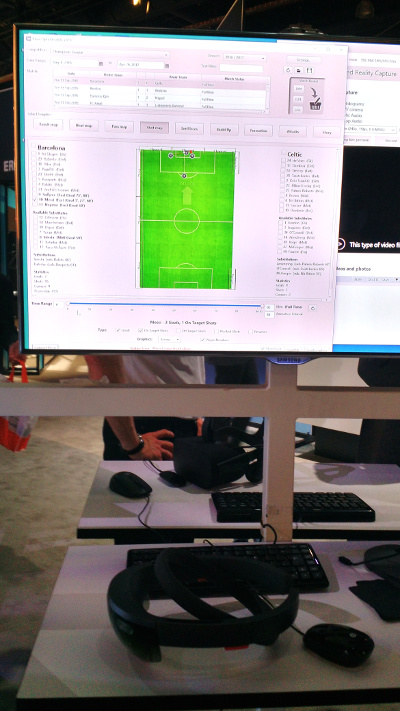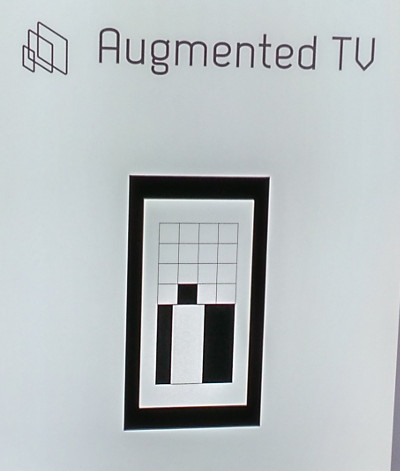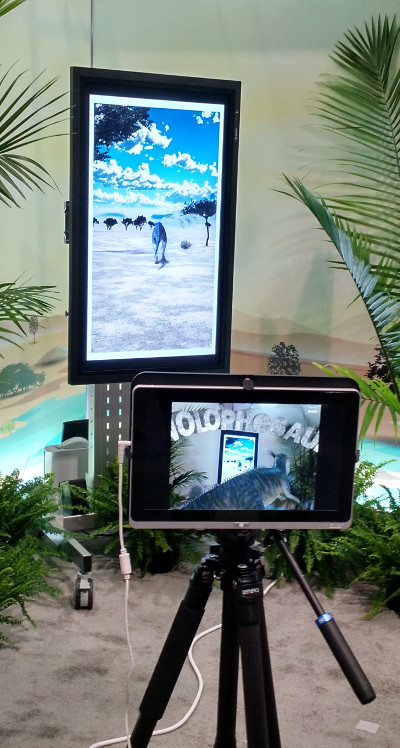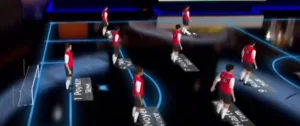Augmented TV is a concept where a phone, tablet or headset is used to add additional information for the user while watching TV in a traditional living room situation. We saw examples from Technicolor, Ericsson and NHK.
The Technicolor demo consisted of placing a barcode placard near the TV so that the tablet’s camera could capture it. The placard has markers on it so that the orientation and position of it could be calibrated by the Hololens headset worn by the user. Technicolor showed how you can add ancillary content above or to the left and right of the TV. Options were selected by using the Hololens finger movement selection gesture (moving the finger from an upright to flat position). The demo was not too impressive as the AR images were not very stable and the Hololens has such a limited field of view you have to constantly scroll around the space to find the AR content.
Ericsson used its Innovation Zone at NAB to show an AR demo using the Hololens device. In the demo, they used a nearby table to create a virtual playing field that was locked in position to the table. When wearing the headset, one could see the live stream of the game on the table with additional information such as stats or highlights placed above the table.
 Ericsson’s AR demo was ‘pretty crude’ and the image failed if you looked from an ‘off angle’
Ericsson’s AR demo was ‘pretty crude’ and the image failed if you looked from an ‘off angle’
The demo was pretty crude with registration to the table not so great and the image falling apart if you looked at the table at an off angle. Further, the limited field of view of the Hololens devices meant your head was constantly scanning around the space to see the game and graphics. This is clearly an experiment at this point and not something very useful.
The NHK demo was the best. It used a tablet that was mounted on a tripod viewing a portrait mode display. A pattern was displayed on the TV to allow the tablet’s camera to establish the position and orientation of the TV relative to the tablet. Then, to maintain calibration, the image on the TV is surrounded by a second pattern consisting of a black and white “frame” that takes up less than 10% of the display area. The augmented reality content is downloaded as an app to the mobile device.


When viewed through the tablet, you see the display with a flat image (dinosaur in the background), but in the foreground is another dinosaur roaming around the room. Since it was tripod mounted, we were unable to judge the image stability. – CC

